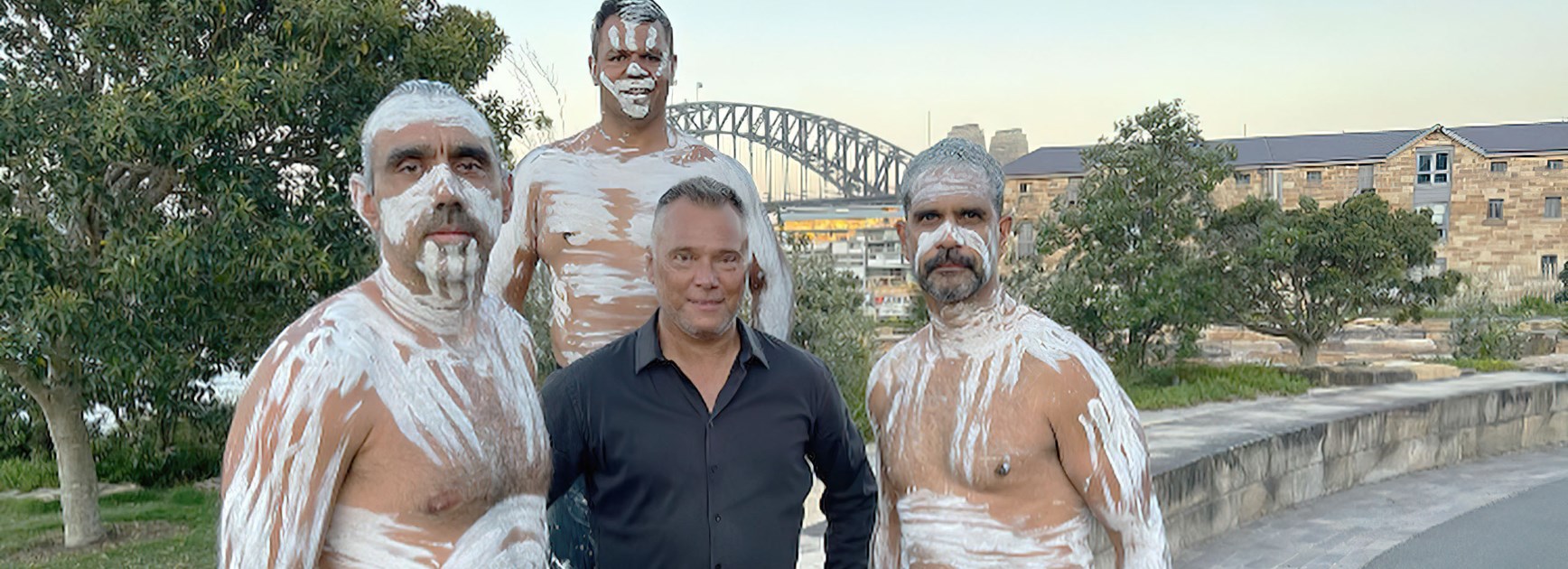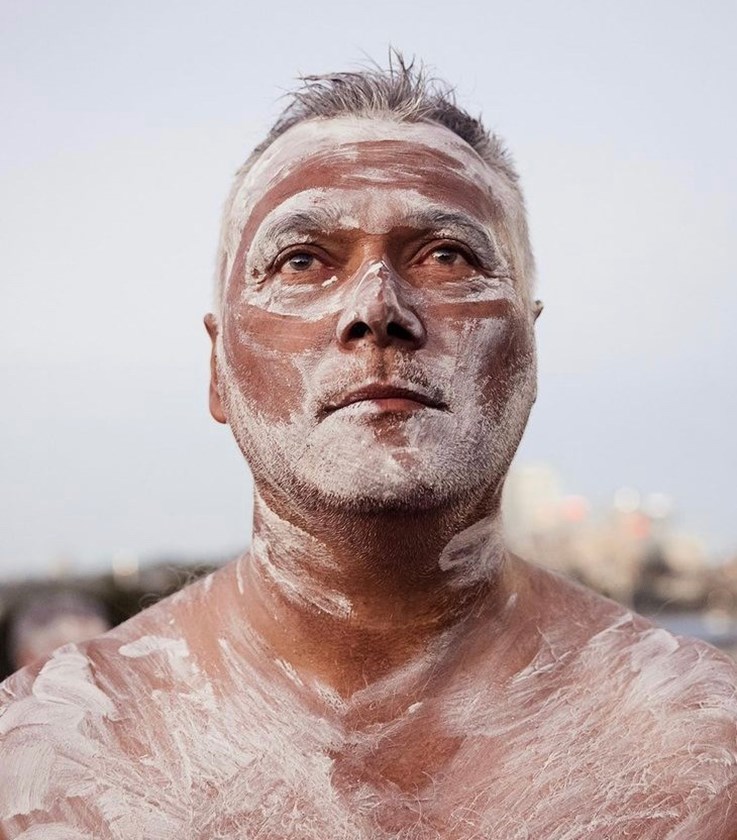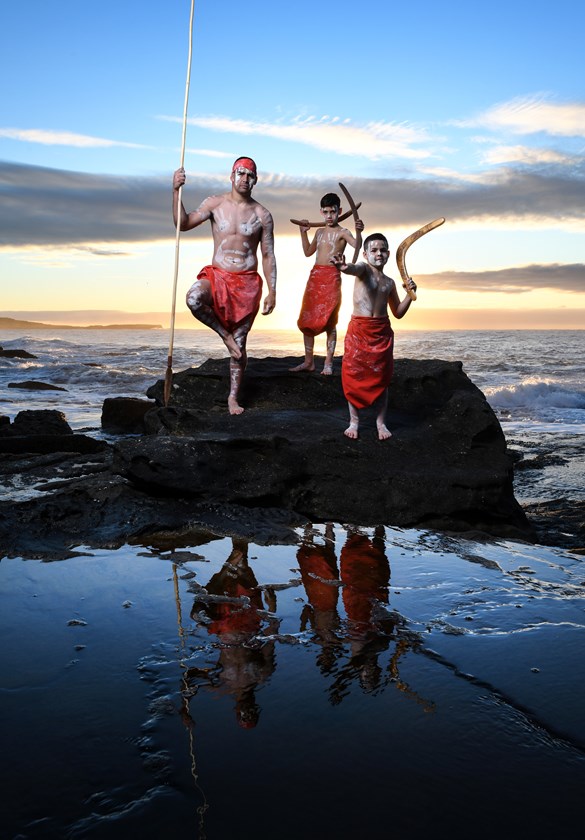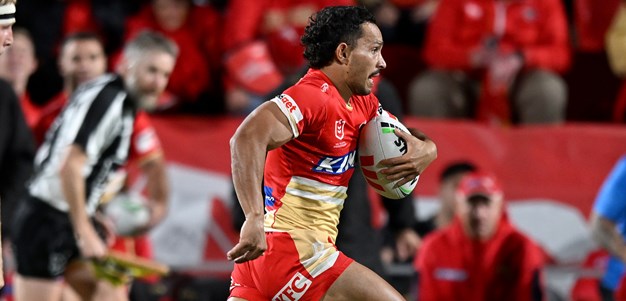
The Unity Dance performed by Indigenous players before the All Stars clash has transcended the game and is fulfilling Dean Widders' vision for a war cry to help bring Australians together.
Seven years after Widders outlined the concept at an NRL Indigenous Players Camp in the Hunter Valley, the Unity Dance has been performed by Bangarra Dance Theatre and featured the likes of Adam Goodes, Michael O’Loughlin, Cody Walker and Stan Grant.
The dance is also the subject of a documentary to be released later this year and there are plans to introduce it into primary schools as part of an education program about Indigenous history and culture.
"It is all about sharing our culture," Widders said. "That’s the way forward - by giving it away.
"It was a special moment to see prominent Indigenous men showcasing the dance publicly for the first time, and it was very powerful because you never see Adam Goodes or Stan Grant like that."
Inglis takes centre stage for Indigenous War Cry
The occasion was The Vigil at Barangaroo Reserve on January 25 - a night of performance and reflection of Indigenous culture and history organised by Sydney Festival on the eve of Australia Day.
Widders, who spoke out against racism during his NRL career, has always believed that the best way to change attitudes was by Indigenous stars celebrating their culture and inspiring others to take pride in it.
The original idea when he discussed the Unity Dance with Bangarra Dance Theatre artistic director Stephen Page in 2014 was to develop a war cry that Australian teams could adopt like New Zealand’s haka.
Indigenous Unity Dance
However, when Widders spoke again with Page for his documentary, Araatika: Rise Up!, the idea of performing the Unity Dance at The Vigil arose and the pair invited Goodes, O’Loughlin, Walker, Grant, George Rose and others to be involved.
"Dean always saw this as a statement of our strength and our unity, and something that is very positive," Grant said.
"It was a really fantastic thing to be a part of on January 25, with all the meaning around that [date], and to have Cody and Goodesy and Mick O'Loughlin and George Rose and all these young guys there with us, you really felt connected to your own people and a real pride in who you are.
"It has really grown and it is something I would love to see other people be a part of."
The genesis
Page attended the 2014 Indigenous players camp to help Widders present his idea for re-introducing a war cry into the game after Kangaroos players decided to abandon the tradition of performing an Indigenous "tribute" before tour matches in 1967.
However, he warned Widders that it would be difficult to develop a modern war cry as the heritage of the players was spread across Australia and there would be cultural as well as language differences.

The solution was to focus on what they had in common, while providing opportunities for the players to represent their individual totems in the dance.
"It’s easy for Maori to have a haka and for everyone to learn it because there is only one dialect that everyone speaks but in this country we have over 300 dialects, which also means you have a quite diverse collection of dance styles," Page said.
"Language is connected to stories, the stories inspire songs and the songs inspire dances.
All Stars: Where it all began
"That was why we came up with that collection of energy that would all face into one, and then they would drop and reveal the person who would lead them.
"It is all about the symbolism of forming together, shielding together, unifying together and then that would just build through a formation passage until they each did their warrior line at the end."
The unveiling
The first performance of the Unity Dance was nearly two years in the making but the reaction when Greg Inglis rose to his feet within a circle of team-mates before the 2015 All Stars match at Cbus Super Stadium ensured the wait was worth it.
Indigenous players coming into camp now want to learn the Unity Dance and it was performed by an Under 15s team before the final of the 2019 Australian Secondary Schools National Championships in Redcliffe.
"It is something special and it gives me goosebumps just watching it," teenage Dragons playmaker Jayden Sullivan said. "It is really moving to see how proud they are to be Indigenous people and they are mentors for all the young players like myself coming through."
Goodes was unavailable for comment about the significance of the Unity Dance and his involvement in the recent performance but the AFL great referred NRL.com to an interview he did for Araatika: Rise Up!.
"You know my mum was taken away when she was five so I’ve come late to identifying through my ancestors and connecting with them, so for me I do want to be that lightning rod for those young kids," Goodes said in the documentary.

"I want them to know deep down that they should be proud of who they are as an Indigenous person. We’re part of the longest living culture on this planet. That’s not celebrated the way it should be – like how the Romans are celebrated.
"But we have got to keep instilling in these young people to be proud about our stories, proud about our dancing, to be proud about what you are doing and how you are doing it."
Widders said: "The ones that make me feel real proud are Cody Walker’s kids. They got painted up and when they danced you could see Cody’s little fellow had just this proud look in his eyes.
"That’s the look that I never got to experience when I was a kid. I never saw my dad painted up, I never saw my dad dance, I never saw my dad speak language.
"It just wasn’t something that my generation got to grow up and see but now these young fellows get to do it and experience it, and it just makes them a little bit more comfortable with who they are."
Sailor scores the first ever All Stars try
The legacy
Widders wants the Unity Dance to have a lasting impact and he has spent 18 months working with director Larissa Behrendt on Araatika: Rise Up!.
The documentary is set to feature revealing interviews with leading Indigenous and non-Indigenous figures, including Andrew Johns, who speaks about his regrets about the incident which led to Timana Tahu quitting the NSW Origin team and the impact it had on him.
"Sport has been at the forefront of dealing with every social issue that we put out there and I appreciate the conversations that have been had," Page said.
"We have got these young boys who come from generations of displacement and assimilation where they didn’t get the volume of information and knowledge so they are inspired by this but the non-Indigenous players are re-informing themselves about history too."
Widders has also partnered with Reconciliation Australia to develop an education program for schools.
"Once the film comes out we will set a primary school class lesson about the dance and there will obviously be some stuff around unity and racism off the back of watching the dance and doing the dance and learning the stories behind it," he said.
Witness the best of the best from both sides of the Tasman. As athletes and as people from the First Nations.
Hear us. See us.
Be there as cultures collide.
Tickets are available at NRL Tickets.





